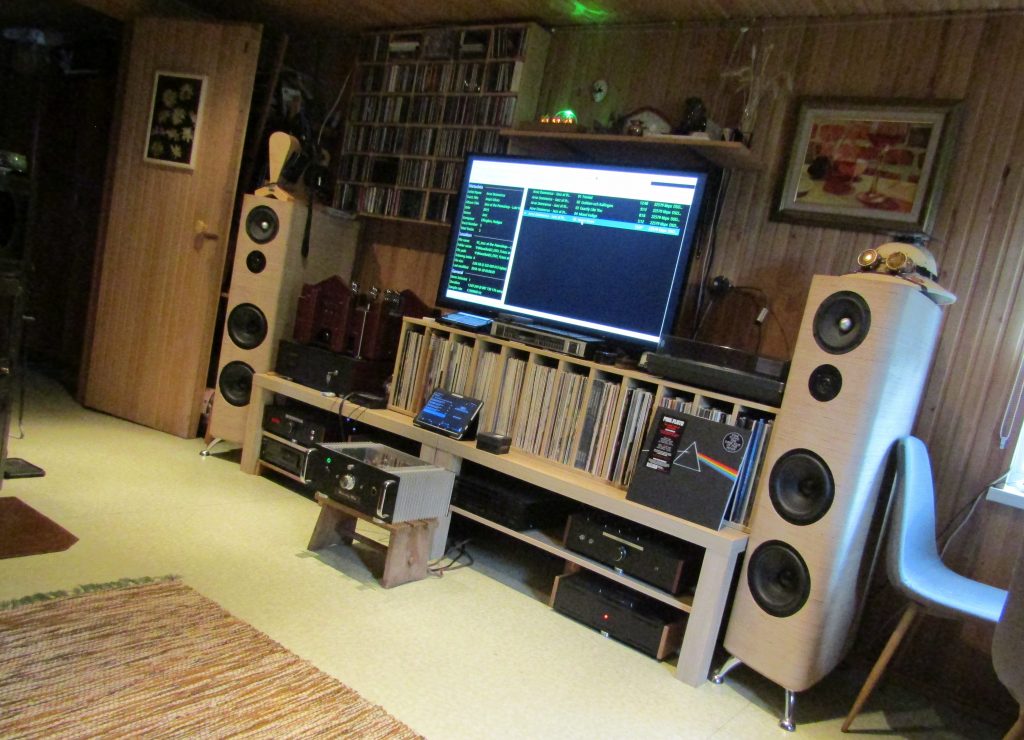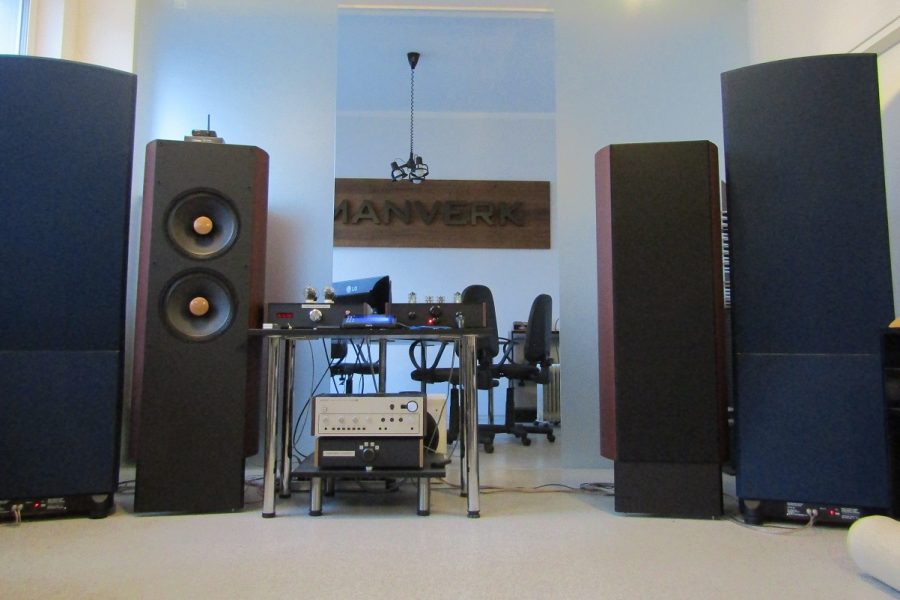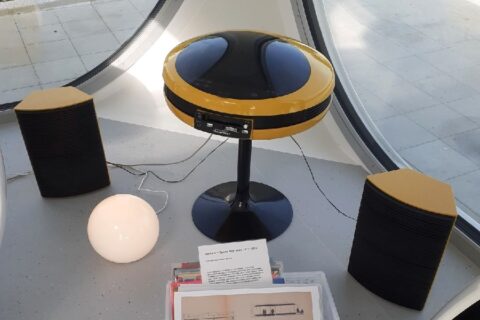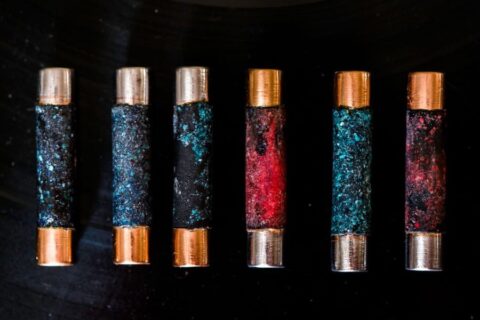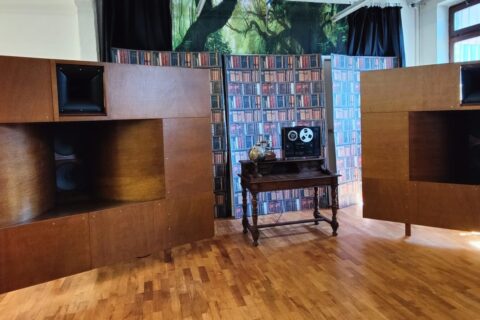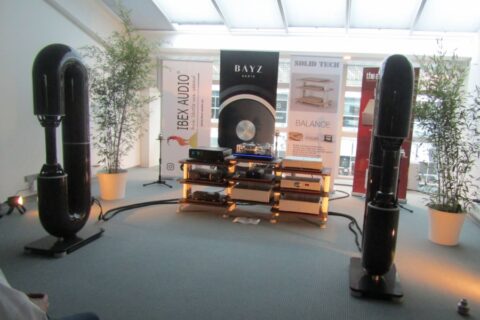What a trip! To a city that’s been conquerred, destroyed and rebuilt so many times over its 1000 years of history (evidence of inhabitants go back to 10000 years), by Germans, by Russians, by Swedes, by the Polish, by Ukranians etc. Each in its own turn, some more than once.
Last time Tartu survived foreign occupation was after the WW II, during which period the whole area was dominated, physically and mentally, by a huge Russian military airbase. Highly secret and mysterious, no local residents were allowed to approach it, its meaning grew in people’s mind and became the symbol for the occupation. No wonder then that after the liberation the base was slowely emptied, and on the spot, in the crossroad of several runways, the new National Museum of Estonia (Eesti Rahva Muuseum) was established in 2016. Literally gradually rising from a runway, it symbolizes a new take-off from the old path. Once again.

I was keen to see the historical city of Tartu, not least because of its famous University, but to speak the truth, there was another, more earthly reason for my coming over: a very special and rare electrostatic loudspeakers, owned by Erik Konka, an Estonian electrical engineer and manufacturer of exclusive amplifiers & preamps, RIAA-stages, DACs and what have you, almost all built around tubes such as this figuratively shaped Wanemuine. It’s a 30W OTL (Output Transformer Less) full triode tube power amplifier (Futterman-Technics SEPP) whose design owes to the Jugend style of the Estonian’s first national theater Wanemuine.
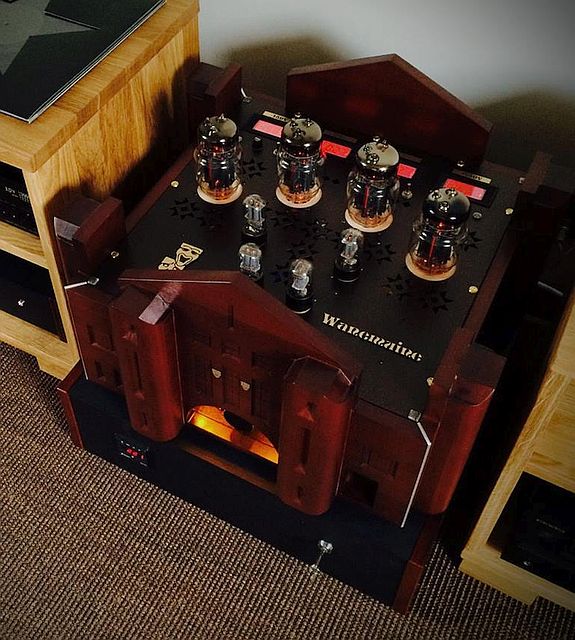 Electrostatics in Russia
Electrostatics in Russia
The loudspeaker in question comes from Russia, and is christianed Statik-2M. Dynamic loudspeakers were largely dominating speaker manufacturing during the USSR period (eg. large factories of Radiotehnika in Latvia), but in the aftermath it appears that the ESL principle wasn’t completely unknown even in the Soviet Union, first series of the ESLs being designed and manufactured already in the 1970s and 80s.
One such Russian electrostatic loudspeaker resembles the Quad ESL57 with an extra bass panel, and is called 25 ASE-101 “Static”. It was manufactured in the 1980s at the PO plant:
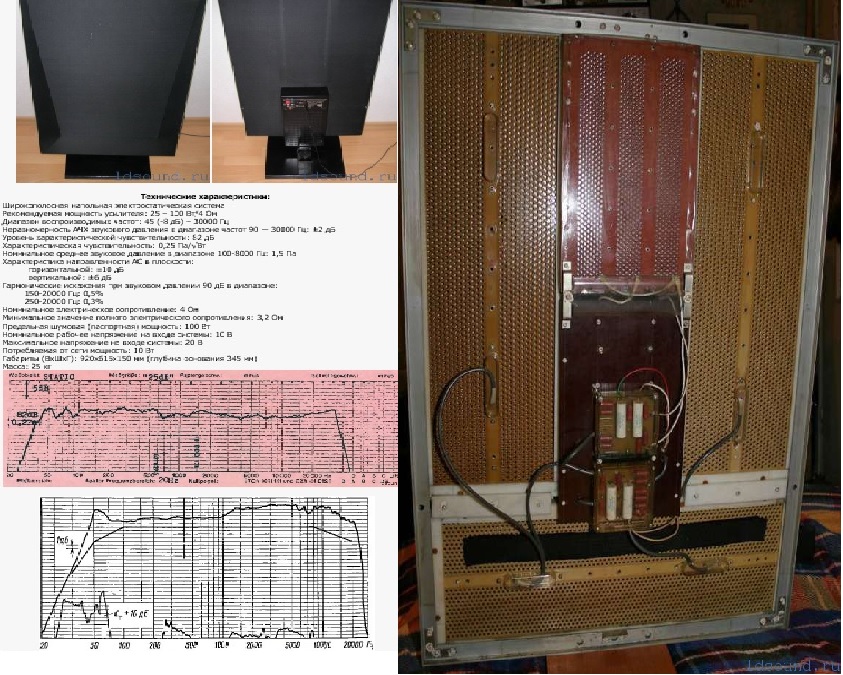
The manufacturer claims frequency response: 45 (-8 dB) – 30000 Hz, and 90 – 30000 Hz / ± 2 dB; sensitivity 82 dB; horizontal directivity: ± 10 dB and vertical: ± 6 dB; harmonic distortion / 90 dB / 150-20000 Hz: 0.5% and 250-20000 Hz: 0.3%; rated resistance: 4 Ohms; minimum impedance: 3.2 ohms; and dimensions (HxWxD): 920x615x150 mm and weight: 25 kg.
Statik-2M ESL
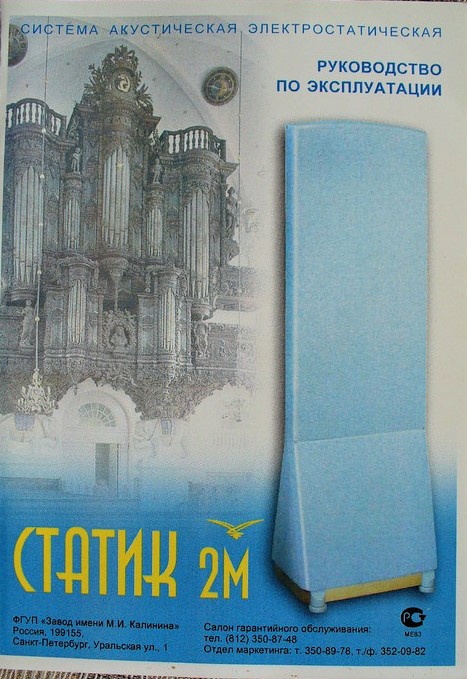 The Statik-2M is of more recent origin, probably designed in the early years of 2000. It’s been made at a factory in St Petersburg whose primary function was to produce goods for the Military (Military Electronics Factory). These factories were traditionally obliged, along with their main activity, to produce objects that benefit the general public (Erik told me about dish aerials being transformed into sleds for kids!). The said factory presumably had an audio engineering section making audio equipment for military purposes, and as a side-activity hi-fi loudspeakers, including some electrostatic models.
The Statik-2M is of more recent origin, probably designed in the early years of 2000. It’s been made at a factory in St Petersburg whose primary function was to produce goods for the Military (Military Electronics Factory). These factories were traditionally obliged, along with their main activity, to produce objects that benefit the general public (Erik told me about dish aerials being transformed into sleds for kids!). The said factory presumably had an audio engineering section making audio equipment for military purposes, and as a side-activity hi-fi loudspeakers, including some electrostatic models.
For some time, it seems, the Statik-2M enjoyed some sort of succcess in Russia but apparently the production was discontinued when the designer and master-mind behind them passed away in 2012.
The manly speakers are 190 cm high and 60 cm wide with the total of 6 panels for two frequency bands: four for the bass and two columns for the treble in between. Electronic shielding, line filtering, etc. are included. By all standards, the internal electronics are realized with military quality components.
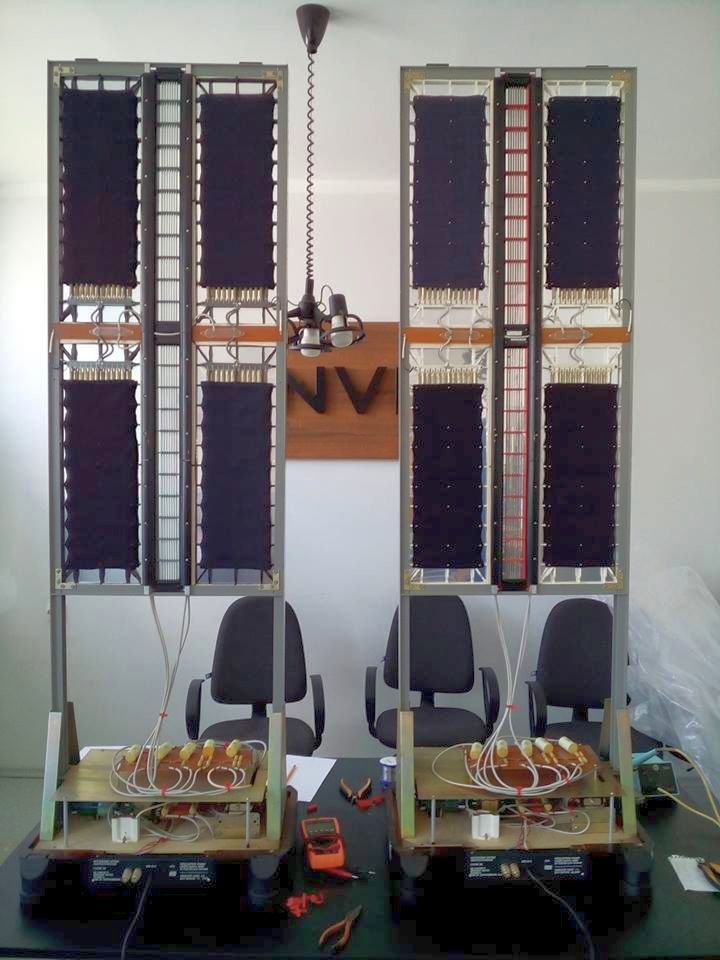
The ‘review’ pair in question was made in 2009, then stored in a computer store in Moscow, in their original packaging, until Erik bought them for himself in 2015 (ie. Erik is the first and sole owner of the speakers so far, and he still has one pair of spare panels in stock). The speakers have been checked out by Erik, and are in a very good technical condition every way. The speakers have just about 100 operating hours behind them, so they still have a long life before them (whenever not used the speakers are capped with a plastic bag to maintain their condition.) In case that the speakers interest you, ask Erik for more info.
Technical specifications (norm / typical):
Frequency response: 35-30000 / 30-40000 Hz
Bass roll-off: 80-20000 +/- 3dB / 60-30000 +/- 2dB
Maximum peak power (PMPO): 100 / 100
Sensitivity: 85 / 87 dB VA / 1m
Impedance max / min: 8/4 / 8/4 ohm
Max THD (260-6300 Hz): 1 / 0.5 %
Dimensions (KxLxS) 1883 x 602 x 440 mm
Weight: 25 kg
It’s not known how the above measurements are being carried out, but what is known is that in the Soviet Union complying with the technical standards was always given priority over the so called sound quality, and taken pride in the manufacturing process.
Speaker placement
In the manual, the manufacturer lectures that no matter how good the speakers are, the final sound quality is a direct function of the features of the listening room and the placement of the speakers in that space. Good results will be achieved only when sufficient attention is paid to the placement of the speakers in the listening room.
Specifically regarding the Statik-2M, the recommendation is to place the speakers within 1 – 1,2 meter away from the wall behind (despite the fact that dipoles are less likely to generate room modes than their standard electrodynamic contesters), to keep 30- 40 cm minimum distance from the side walls, and let the distance between the speaker and the listener be 1.8 – 4 m. Placing the speakers in the corner of the room, or in an alcove or behind furniture, is something to be avoided to the last.
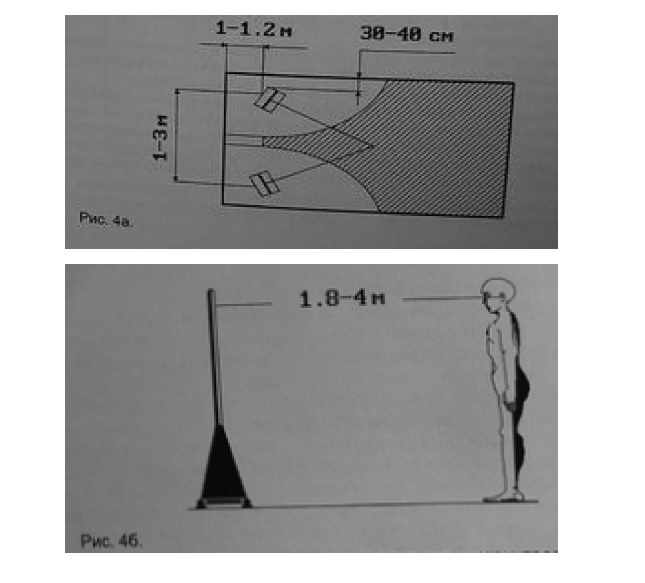
According to the manual, the loudspeaker panels must be turned directly toward the listener. Thanks to the fairly smooth response of these ESLs, the manufacturer claims, it is possible to position the them much wider apart than standard speakers, which will expand the stereo image. Placing the speakers near the side walls does not significantly affect the playback sound quality for the reason that the statics area dipoles (emit no sound sideways or vertically), and thus no lateral or vertical room modes or early reflections are generated.
The manufacturer even urges owners to use high quality music recordings during the placement process, preferably well-known live performances in famous concert halls. Reportedly high quality vocal recordings are good for the job too.
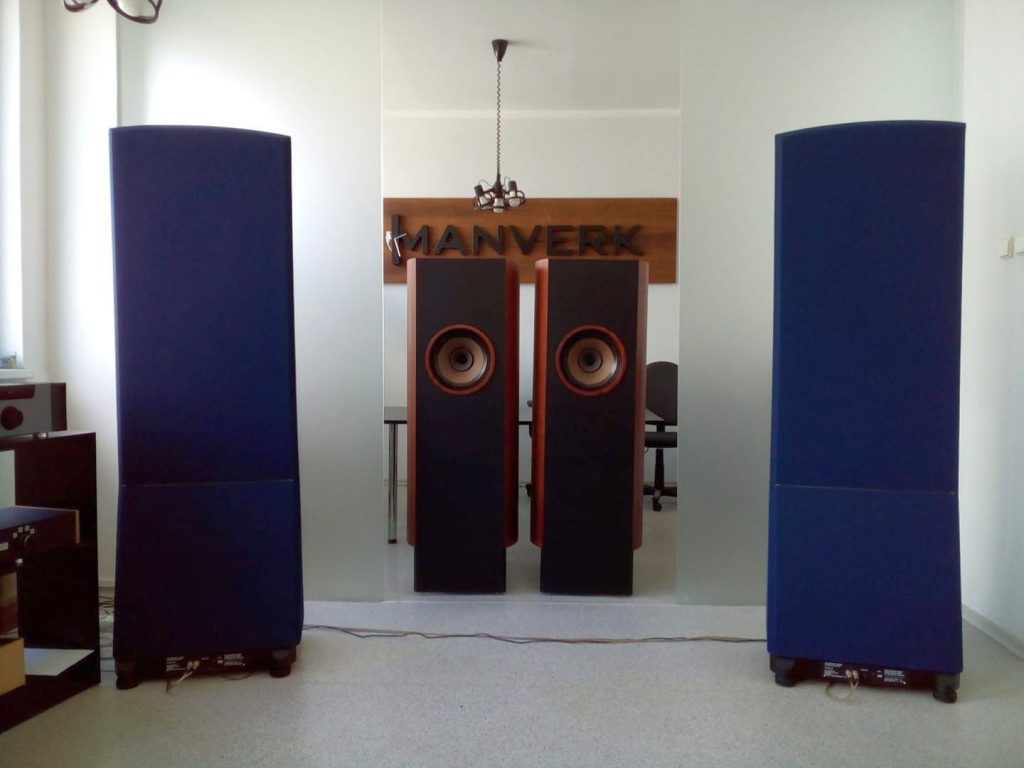
During my visit, the speakers were parked in an office space, in a rather tall and long room with bare concrete walls and large glass surfaces, a mid-sized carpet as the only damping element. The speakers were dragged to the middle of the room no solid wall immediately behind them. The listening space may not have been exactly ideal for critical auditioning but no matter: I found the sound sufficiently good and universal to render listening possible.
The computer shop in Moscow also tested the Statik-2M speakers and came to the conclusion that they are very demanding in terms of the room acoustics, and that a surface area even about 30 square-meters would be insufficient to unleash their potential. They managed to get the maximum sound quality in the room about 50 square meters. In smaller rooms, and poor acoustics, the sound stage blurred, the localization of images suffered, and the impression of the depth of the sound almost disappeared, was their verdict. They also stress that because the speakers radiate sound equally to both directions, they must be installed very carefully further away from the rear walls and corners. It is also desirable to unload the room as much as possible from furniture and other reflective decorative elements. Moreover, they say, it is advisable to listen to these speakers from a sufficient distance, preferably at least 4-5 meters. So we did.
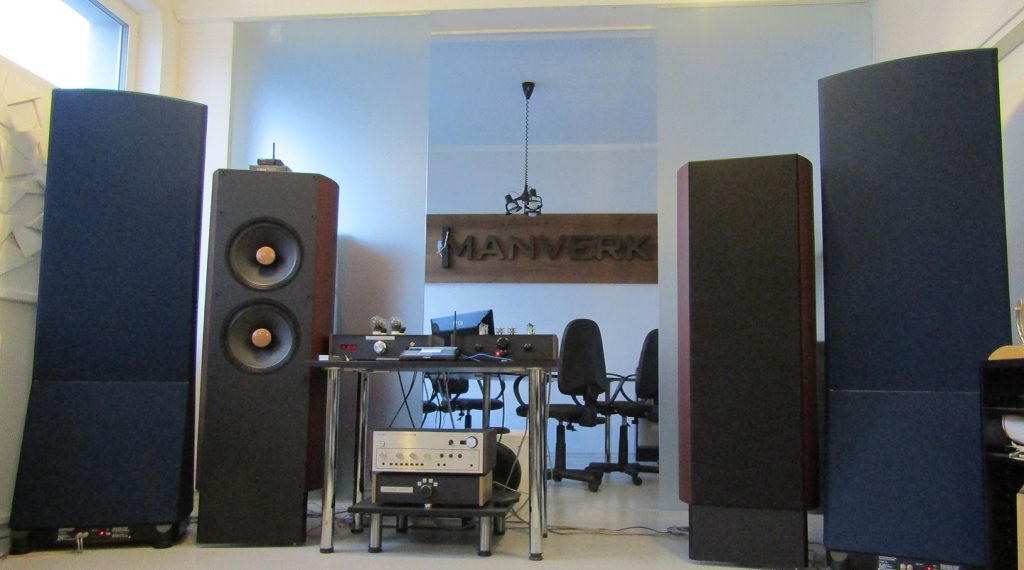
Sonics
What added to the excitement of auditioning the Static 2M electrostatic speaker was the point of comparison: Erik Konka’s drop-shaped open-back open-bottom loudspeaker with two 12 inch widebandwidth drivers by the French EM Speakers (34Hz, 16 ohms, 35-15000 cycles/s) on top of each other. With sensititivy almost 100 dB these speakers are easy for the amplifier (Erik had built a dedicated 3 watter tube amp for them) and due to their construction, they seem not to mind the characteristics of the listening space as many normal speakers do. Adding the second driver per channel may undermine the point-source idea of using a single driver but as Erik explained, giving up puritanism offers other advantages.
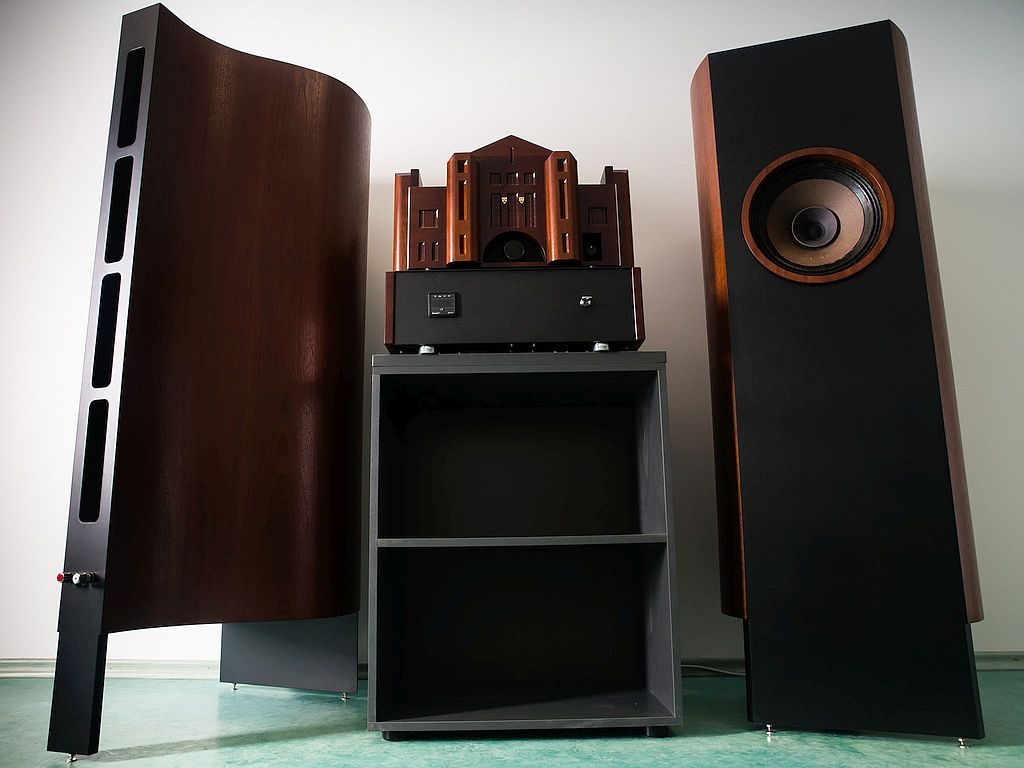
As to the tonal quality and smoothness of the response, the Statik 2M appears to perform well if not superbly (not surprising given that technical goodness was the primary goal of the performance). The tonal balance was correct in that no frequency band is invading the other. I’d even say that the balance was a tad smoother than with the widebanders (perhaps because of lacking resonances?) even though the EMS drivers themselves are smooth over the critical areas. What confuses the assessment here is that the due to their radiation the sound of the electrostatics is livelier and more prone to interact with the room. Anyway, if anything, it is only the extremes of the frequency response that should concern us here, and while I come back to the bass a bit later, it suffices to say that the Statik-2M showed some hardness or metal quality in treble, of which I’m almost certain that it was caused by the naked walls and windows, or the large glass doors behind the speakers.
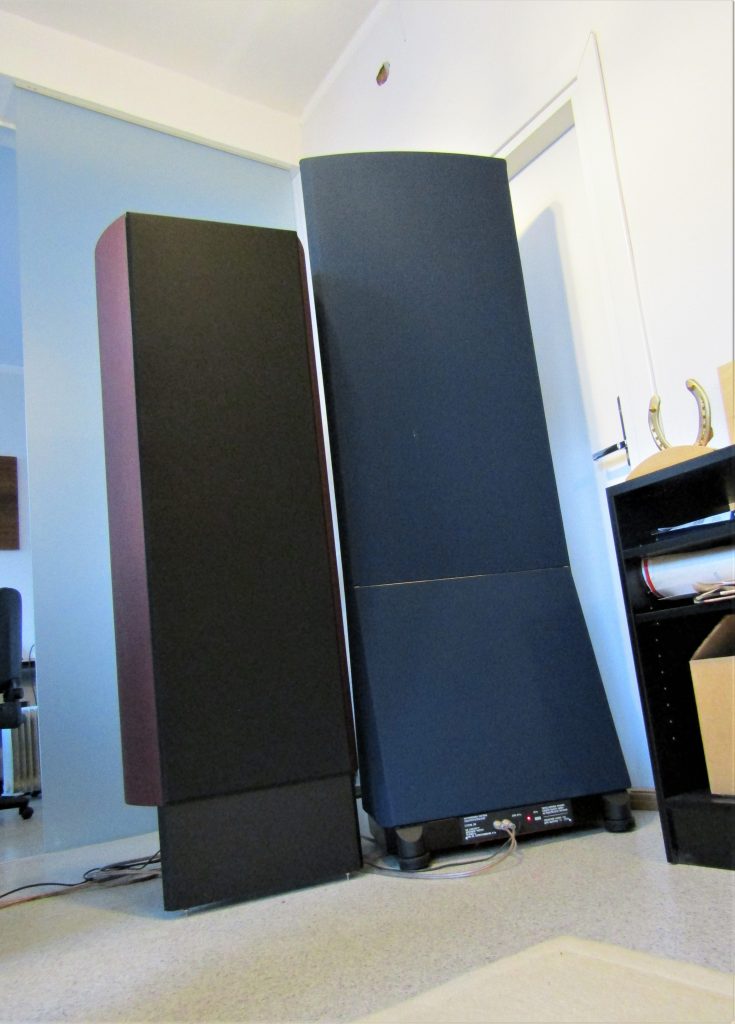 Soundstage and imaging
Soundstage and imaging
Perhaps the most interesting aspect of the Statik-2M sound, and the obvious difference between the two speakers, was associated with the ways they radiated the sound into the room: the Statik-2M’s behaving like fully-fledged dipoles do, and the EMS widebanders letting much less sound backwards, and mainly forward (down to a certain frequency). In consequence of this, the sound of the Statik-2M’s, as you can imagine, was hugely airy and open, detailed and transparent, and with selected progam material tremendously spacious. The EMS widebanders too managed to create a superbly three-dimensional soundstage but in the absence of the rear bouncing sound the soundstage was more of a Hi-Fi kind, and thanks to it, also more physical: the sound sources on the soundstage appear bigger and closer to the listener. This physicality is something that compliments certain type of music while the extraordinarily spacious and expanding sound field of the Statik-2M, and its immaterial and laid-back and distant sound benefit material incorporating the acoustics of the recording venue (classic). So if you’re a friend of minimally microphoned orchestral or vocal music, you should experience what the Statik-2M’s are able to do: the reproduce the stage and acoustics of a concert hall almost in its natural dimensions and air.
The dealer shop concluded about the sound of the Statik-2M: ”The sound of this system, assessed against the background of what we have previously seen and heard from similar electrostatic speakers by foreign manufacturers, not only convinced us of the correct principle of this type of loudspeakers, but also pleasantly surprised us.”
And the bass?
As is well known, lack or weakness of bass is the Achilles heel of the ESLs. Thanks to the rather large radiating surface the Statik-2M’s are, however, able to produce bass exceptionally well, significantly better than my Quad ESL 63s, for example (although they aren’t that bass shy as is sometimes claimed). The Statik-2M may in fact be a rare ESL in the respect that they may not reguire extra bass support from an external large dynamic woofer.
For the very same reason, as noted above, they demand to be played back in a big room. Erik first used them in a house with wooden walls and had no problem with the bass but his current listening space is clearly not voluminous for the bass output of these speakers. Here’s what the dealer shop had on the bass: ”There is a strong common opinion that electrostatics are absolutely incompatible with “solid bass reproduction”. These speakers completely destroyed this myth. They actually reproduced the full spectrum of the frequency range, reliably down to 40 Hz at minimum. Thundering deep bass, no, but if the listener needs just the right bass, not shaking of the floor or glass, then the bass is simply enough.”
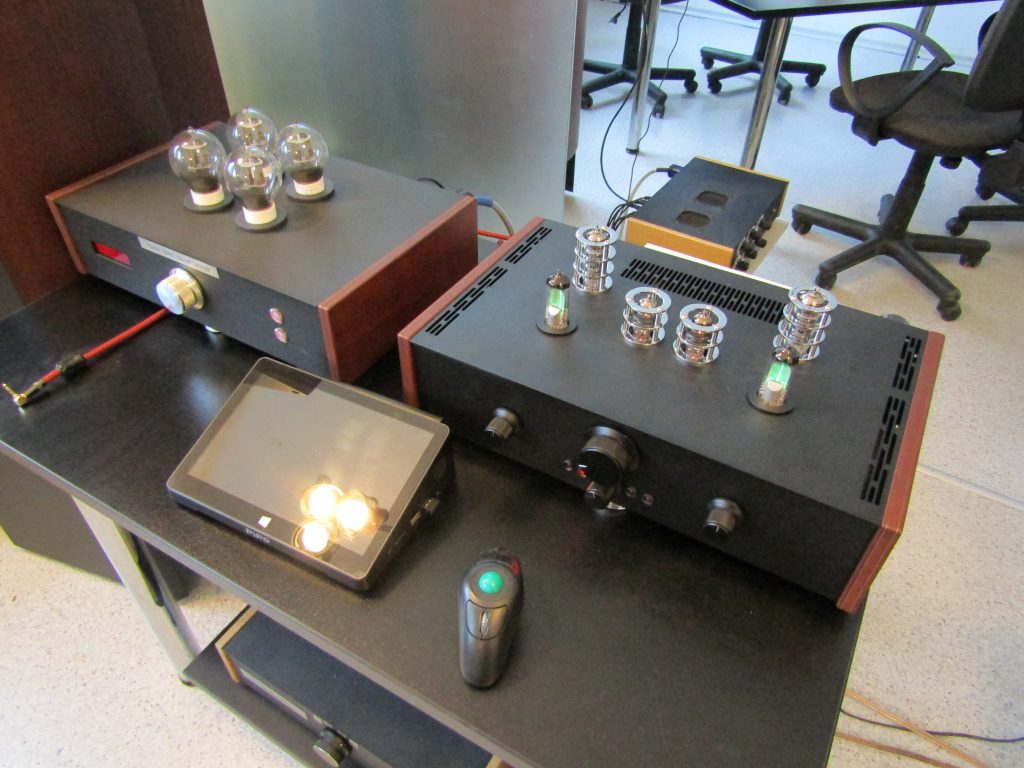
Amplification
The amp to drive the speakers? Given that the Statik-2M’s are a low sensitivity and current hungry design by modern standards, they need to be hooked to a not too weak-powered amplifier. Even with sufficiently powerful amplifiers, to obtain an average volume level may require turning up the volume knob unusually much. However, in practice, a quality amp with sufficient power reserves would manage to control the speakers. Erik’s has designed his own 2 x 50W Class A transistor amplifier for the Statik-2M but for our meeting he had chosen to drive the Statik-2M with a used Sony V-FET amp from the 70s, and that is because just recently he got interested in V-FET amps that enjoy some sort of reputation among aficionados. The serviced amp, as far as I can tell, showed no sign of weakness or fatigue, not to speak of collapsing, in driving the speakers.
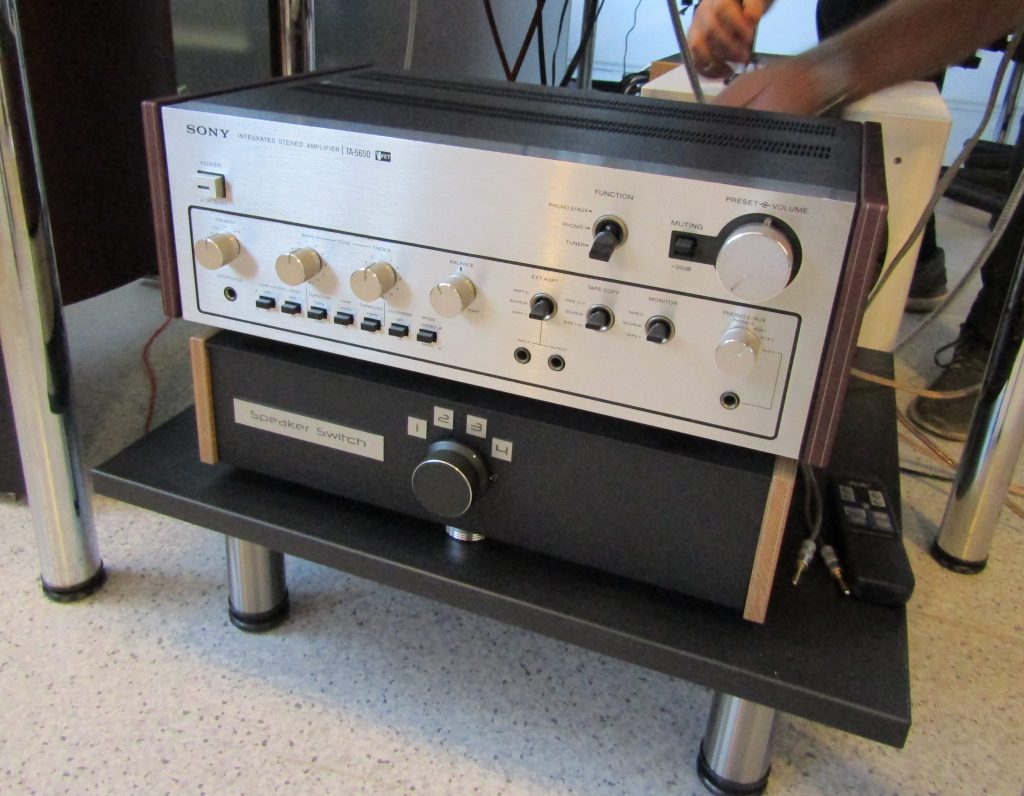
Then in Erik’s own man cave I saw another V-FET amp, a 16 watter built by Erik around NOS V-FETs acquired from China.
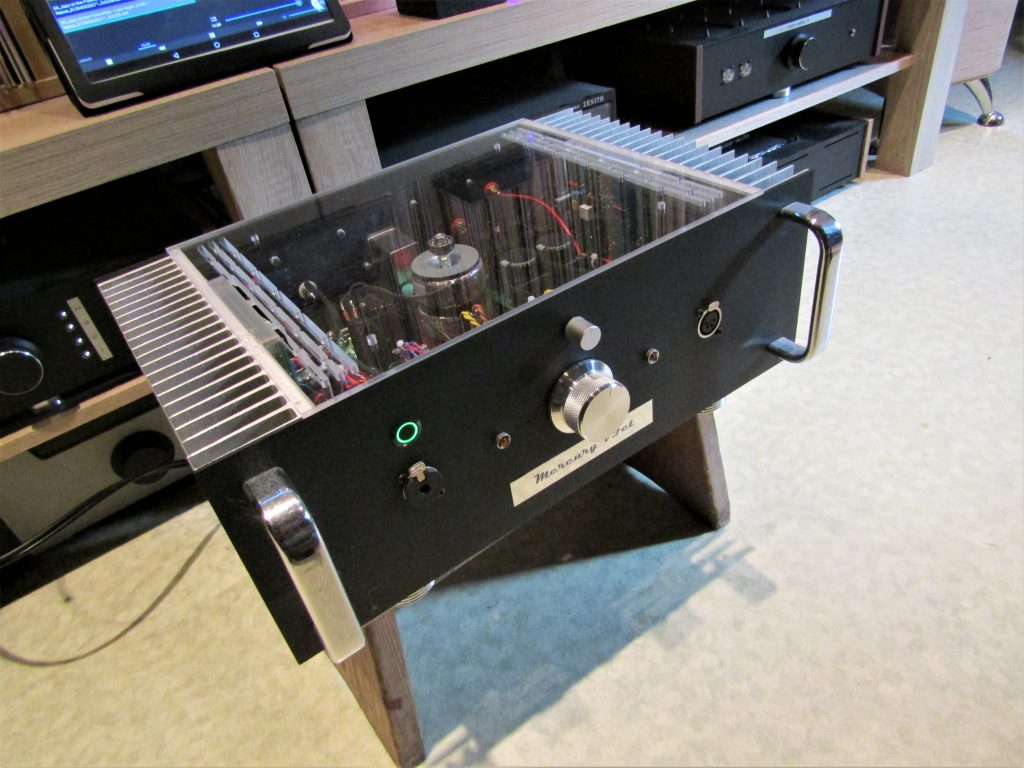
The circuit is based on old ideas, which Erik has further developed especially regarding the power supply. When we switched from the 30W OTL amp to this tiny solid state, I must say something interesting happened: lusciousness of the tubes perhaps gone but on the credit side there was this honest, plain, straightforward, fast, positively dry sound. It came so suddenly and I was able to hear it only for a short period of time, but the amp certainly left a good memory trace. The amp probably benefits from a not too dry-sounding loudspeaker but once a happy match is found, I’m sure the amp has a good chance to produce a very promising sound. The speakers we were listening to were Erik’s own, developed with a knowledgeable friend, F-key shaped 3-way with separate cabinets for the bass, midrange and tweeter drivers. Apart from the turntable and CD-player, all electronics in Erik’s system are made by himself. What a great consistent sound!
